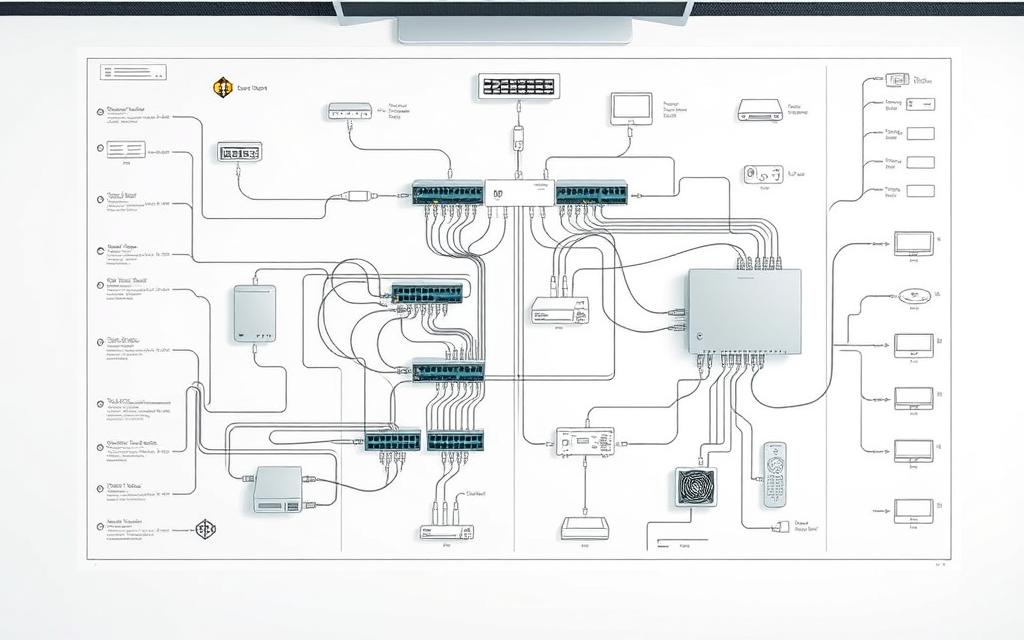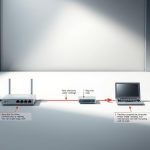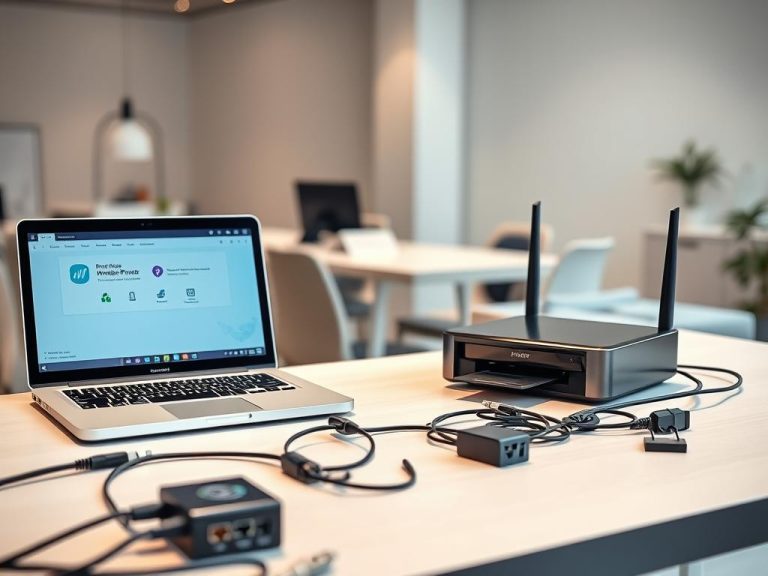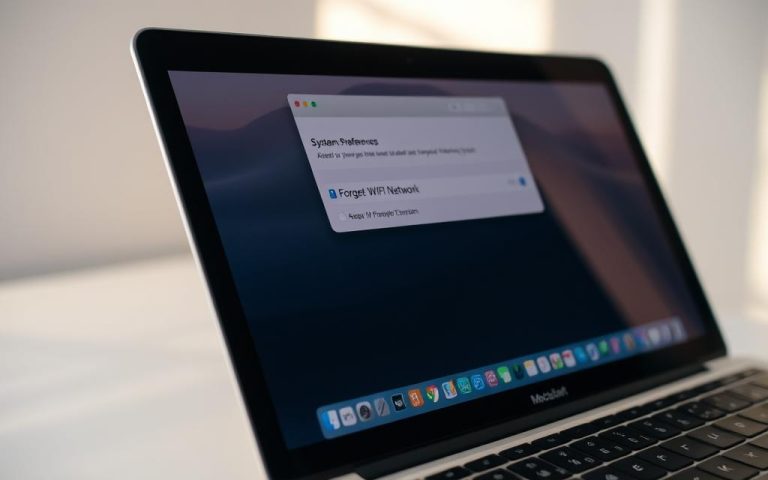How to Find Out What Network Your Computer Is Connected To
Knowing your active connection helps troubleshoot issues and secure your data. Whether at home or work, identifying the right setup ensures smooth browsing and protects against unauthorized access.
Many users wonder about their current link when experiencing slow speeds or connection drops. This guide provides clear steps to check settings on different operating systems.
Simple methods like checking system icons or using command tools reveal essential details. Both Windows and Mac offer quick ways to view this information without technical expertise.
Understanding your setup also optimizes performance for streaming, gaming, or remote work. Stay informed and take control of your online experience with these easy techniques.
Why Knowing Your Network Connection Matters
Recognizing your active link boosts security and performance. Unverified setups expose devices to risks like malware or data theft. Public Wi-Fi, for example, often lacks strong encryption, making sensitive details vulnerable.
Firewall settings vary by network type. Private links at home or work enforce stricter protections than public ones. Misconfigured settings might block legitimate traffic or allow breaches.
Hardware issues cause 90% of disruptions. Loose cables or outdated adapters slow data transmission. Tools like Device Manager reveal adapter capabilities, helping diagnose problems faster.
Smart homes rely on stable connections. Integrating devices like thermostats or lights requires optimal coverage. Weak signals disrupt automation, forcing manual overrides.
“Understanding your setup answers 65% of common IT questions, from speed drops to device failures.”
For deeper insights, explore our guide on setting up a computer network. Proper configuration prevents conflicts and ensures seamless operations.
How to Check What Network Your Computer Is On
Identifying your active setup helps optimize performance and troubleshoot connectivity issues. Windows provides multiple ways to view this information, whether through simple GUI methods or advanced command-line tools.
![]()
Using the Network Icon in Windows
The system tray displays a small network icon showing your connection status. Right-click this symbol to access quick settings and view details like signal strength and security type.
Follow these steps for detailed information:
- Click the Wi-Fi or Ethernet icon in the bottom-right corner
- Select “Network & Internet settings”
- Choose “Properties” under your active connection
This reveals essential parameters including IP address, DNS servers, and network profile. Public networks have stricter firewall rules than private ones for enhanced security.
Using Command Prompt (ipconfig)
For advanced users, Command Prompt offers deeper insights. Type “ipconfig” to display all active connections and their configurations.
| Parameter | Description | Example |
|---|---|---|
| IPv4 Address | Device identifier on local network | 192.168.1.15 |
| Subnet Mask | Defines network segment boundaries | 255.255.255.0 |
| Default Gateway | Router’s IP address | 192.168.1.1 |
For more detailed routing information, consider using our guide on locating IP addresses across complex setups.
The TCPView utility provides real-time monitoring of all active connections. This helps identify unauthorized access attempts or bandwidth-heavy applications.
Finding Your Network Name on Different Operating Systems
Locating your current setup details varies across platforms but remains straightforward. Whether using Windows or macOS, built-in tools reveal critical parameters like SSIDs and device identifiers. These steps help optimize sharing, security, and troubleshooting.
Windows 7, 8, and 10
For Windows 10, open Settings > System > About to view the device name. Alternatively, use Control Panel > System for legacy versions. This displays the NetBIOS name, essential for file sharing across five or more devices.
Older systems like Windows 7 require right-clicking “Computer” > Properties. The “Computer name” section shows workgroup or domain details. Differences between device names and SSIDs matter when configuring printers or media servers.
Mac OS X
Mac users navigate to System Preferences > Sharing. The Computer Name field appears at the top. For Wi-Fi details, click the menu bar icon to see the active SSID marked with a check.
Advanced settings like WINS tabs manage legacy compatibility. Proper naming prevents conflicts in mixed-device environments. Avoid revealing names on public networks to deter targeted attacks.
“NetBIOS names resolve 80% of connectivity issues in office networks.”
For deeper insights, check adapter properties or use Terminal commands like scutil --get HostName. These reveal IP ranges, DNS servers, and signal strength—key for diagnosing slow connections.
Conclusion
Mastering your connection details ensures smooth browsing and robust security. GUI tools, command prompts, and system settings offer reliable ways to verify your setup across devices.
Regular checks prevent common issues like slow speeds or unauthorized access. Public links demand extra caution—disable sharing features to protect sensitive data.
Advanced users benefit from combining methods for thorough verification. Stay updated on OS changes to adapt to evolving standards like Wi-Fi 6.
Share this guide with colleagues or friends facing connectivity challenges. For complex setups, explore our Network and Sharing Center tutorial.
FAQ
How can I see which Wi-Fi network I’m connected to in Windows?
Click the network icon in the system tray (bottom-right corner). The connected network name appears at the top of the pop-up menu.
What’s the quickest way to check my connection details?
Open Command Prompt and type ipconfig. Look for the IPv4 Address and Default Gateway under your active adapter.
Does the method differ between Windows 7, 8, and 10?
No. All versions display the network name via the system tray icon. Settings menus vary slightly, but the status page always shows connection details.
How do I find my network on a Mac?
Click the Wi-Fi icon in the menu bar. The current network has a checkmark. For advanced details, go to System Preferences > Network.
Why does my network status matter?
Identifying your connection helps troubleshoot internet issues, avoid unauthorized access, and configure devices like printers or NAS drives correctly.
Can I rename my home network?
Yes. Access your router’s admin page (usually via a browser) and update the SSID (network name) under wireless settings.















